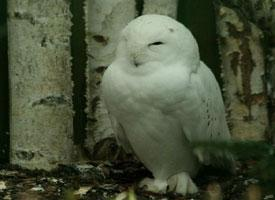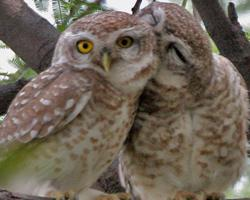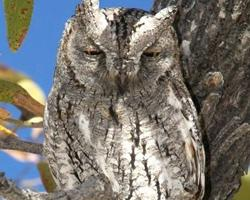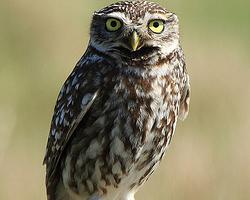
Poids et mesures
| Longueur | de 23 à 25 cm |
|---|---|
| Poids | de 150 à 250 g |
| Envergure des ailes | de 50 à 56 cm |
Statut de conservation
| Menacé |
Description de l'animal
The Little Owl (Athene noctua) is a small, enchanting bird of prey that captures the hearts of many with its distinctive appearance and captivating behaviors. Native to the warmer parts of Europe, Asia, and North Africa, this owl has also been introduced to New Zealand. It thrives in a variety of habitats, including open country with scattered trees and bushes, farmland, and even urban areas, showcasing its adaptability and resilience.Physical Description:
The Little Owl is a compact bird, measuring about 21 to 23 centimeters in length, with a wingspan of 54 to 58 centimeters, and weighing approximately 180 to 220 grams. Its size and stature might be small, but its presence is mighty. The plumage is predominantly mottled brown, with white spots on the wings and back that provide excellent camouflage against tree bark and rocks. The chest and belly are paler, adorned with streaks and spots that blend seamlessly into its surroundings. Its head is rounded, with no ear tufts, and features striking yellow eyes and a yellowish beak, giving it a perpetually alert and intense expression. The feathered legs and talons are strong and adept, suited for hunting and grasping its prey.
Behavior and Diet:
The Little Owl is a versatile predator, with a diet that includes a wide variety of prey such as insects, earthworms, small mammals, birds, and amphibians. Its hunting strategy is as versatile as its diet, often hunting from a perch like a branch or a rock, swooping down on its prey with remarkable agility and precision. It is also known to hunt on the ground, especially for insects and earthworms.
This owl is primarily nocturnal, though it is not uncommon to see it active during the day, especially in the early morning and late afternoon. Its vocalizations are varied and include a series of mellow hoots, screeches, and whistles, which are used for communication between mates and signaling territory.
Breeding and Lifespan:
The breeding season for the Little Owl varies by region but typically occurs in spring. They are monogamous birds, often forming long-term pair bonds. Nests are usually made in natural cavities, such as hollow trees, or in crevices in buildings and cliffs. The female lays between 3 to 5 eggs, which she incubates for about 28 to 29 days. The male is responsible for feeding the female during incubation and both parents take part in feeding the chicks once they hatch. The young owls fledge at about 30 to 35 days old but may remain with their parents for several weeks after.
Conservation Status:
The Little Owl is classified as of Least Concern by the International Union for Conservation of Nature (IUCN), indicating that it is currently not at immediate risk of extinction. However, like many wildlife species, it faces threats from habitat destruction, pesticide use, and road collisions. Conservation efforts are essential to ensure the stability of its populations and the preservation of the habitats on which it depends.
In summary, the Little Owl is a small yet fascinating bird of prey, with distinctive physical features and behaviors that endear it to bird enthusiasts and conservationists alike. Its adaptability to various habitats and its role in the ecosystem as a predator make it an important species for biodiversity. Despite its current stable status, continued efforts in conservation and habitat protection are vital to safeguard the future of the Little Owl and the rich biodiversity of the ecosystems it inhabits.
Carte de répartition
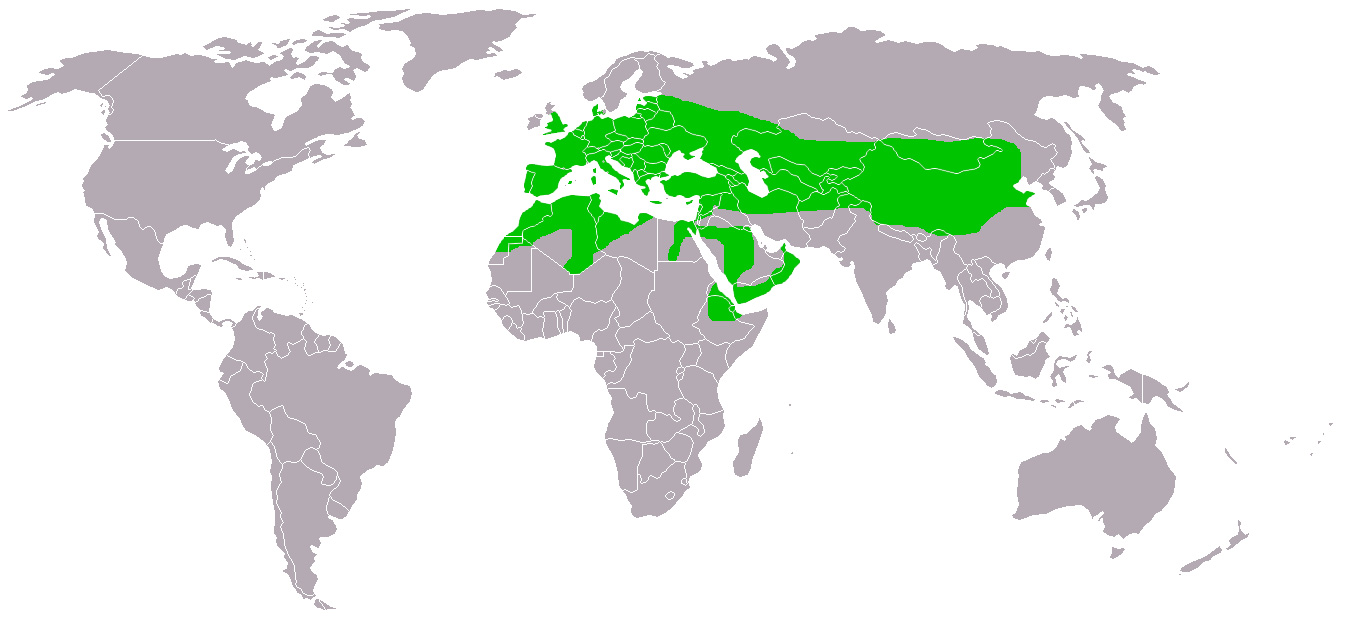
Animaux similaires
Nouvelles photos d'animaux
Top 10 des animaux
- Dolphin gull (Leucophaeus scoresbii)
- Diana monkey (Cercopithecus diana)
- Moustached guenon (Cercopithecus cephus)
- Galápagos tortoise (Geochelone nigra complex)
- Japanese macaque (Macaca fuscata)
- Stone loach (Barbatula barbatula)
- Russian tortoise (Testudo horsfieldii)
- Greek tortoise (Testudo graeca)
- Common flying dragon (Draco volans)
- Vendace (Coregonus albula)
